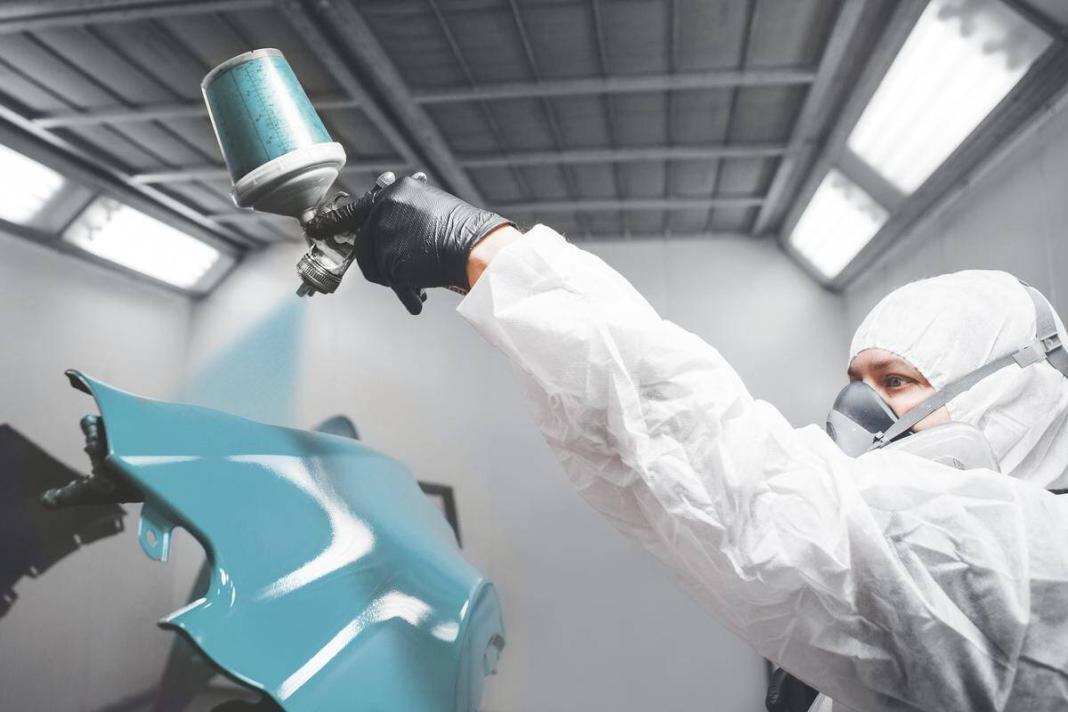Anyone can splash paint onto a surface, but it takes a good understanding of techniques to achieve a professional look. Auto painting is no different. It’s not just about changing the color of your vehicle. Instead, it’s a process that requires precision, patience, and skill. This article aims to guide car enthusiasts, newbie auto painters, and professionals alike through the varied techniques of auto painting.
With the plethora of options today, it can be mind-boggling to select a painting technique that aligns best with your requirements and budget. Therefore, educating oneself about the various car painting techniques can lead to satisfactory results without regret, whether you choose to do it yourself or hire professionals. By having a deeper understanding, you will appreciate the hard work that goes on behind the beautiful, shiny finish of your car, and it may even inspire you to attempt to paint your vehicle.
Basics of Car Painting
Auto painting may sound straightforward, but it involves several steps and terminology, which could be overwhelming for a beginner. Firstly, a terminology common in car painting is the paint system which consists of layers like the primer, base coat, and clear coat. These terms may seem complex, but remember, they are simply stages involved in painting a car.
Before you embark on painting your car, it’s essential to understand that taking protection measures is key. This step includes wearing the right clothing and masks for protection against harmful paint fumes. A well-ventilated space, away from open flames or sparks, is an ideal location for painting. Remember, safety comes first!
Car painting, mate, is more than just slapping a coat of paint on your vehicle. It’s an art that requires skill, precision, and an understanding of the materials involved. If you’ve ever wondered how your car gets that slick, glossy finish, let’s delve deeper into the basics of car painting.
First and foremost, the process involves meticulous preparation. This includes cleaning, sanding, and priming the car’s surface to ensure the paint adheres properly. You wouldn’t want any dust or grime messing with your paint job now, would you?
Next comes the actual painting. The choice of paint is crucial. High-quality automotive paint isn’t just about the color; it’s also about durability. We’re talking about paint that can withstand the harsh Aussie sun, resist scratches, and still look brilliant after years.
Then, it’s time for the skilled hands of the painter to take over. Using a spray gun, the paint is applied evenly across the surface of the car. It’s a delicate balance of distance, speed, and technique. Too close or too fast, and you might end up with runs or drips. Too slow or too far, and you might get a patchy finish.
Understanding Different Painting Techniques
When it comes to auto painting, one should know that different applications require different techniques. The traditional spray painting technique involves spraying paint directly onto the car surface using a pneumatic gun. This method allows for thin, even coats, resulting in a smooth finish.
Dip painting, on the other hand, involves dipping the car into a large vat of paint. The paint adheres to the surface, ensuring an even finish.
Lastly, powder coating is a technique where the car is coated with a layer of powdered paint. The vehicle is then heated, which causes the powder to melt and form a smooth coating. While this method is more expensive, it offers excellent durability.
Essential Tools and Materials for Auto Painting
Auto painting requires more than just paint and a brush. It would help if you had tools like paint sprayers, air compressors, and sandblasters for certain techniques. When using spray paint, for example, a good quality spray gun and an air compressor are essential for a smooth and even application.
You also need the appropriate type of paint for your selected method. Traditional spray car painting and dip painting usually require liquid paint, while powder coating requires powdered paint.
Moreover, other necessary materials include primer, clear coat, masking tape, and health protection gear like masks and gloves.
Step-By-Step Guide to Auto Painting
Painting a car is a meticulous process and requires careful preparation. Before you begin, the car needs to be washed and sanded to prepare the surface for painting. The primer is then applied and allowed to dry before the paint.
Different techniques have different methods of paint application. Traditional painting requires evenly layering the paint using a pneumatic gun. Dip painting, on the other hand, involves dipping the car into a large vat of paint. After applying the paint, a clear coat is added to protect the paint and add a glossy finish.
Choosing the Right Technique for You
Choosing a painting technique depends on various factors such as your budget, time, and the type of finish you desire. Spray painting, for example, is a popular choice as it provides a professional finish at a reasonable cost. However, it requires a certain level of skill and time.
Dip painting is less labor-intensive and provides an even coating. However, it might be difficult for DIY as it requires a large vat of paint.
Powder coating is expensive but provides excellent durability, making it popular for high-end cars or cars exposed to harsh environments. Understanding the pros and cons of each technique can help you select the best method for you.
Expert Tips on Auto Painting
Here are a few expert tips to help you with auto painting:
– Always clean and prepare the surface properly before painting.
– Always use a primer before applying paint.
– Apply paint in thin layers and allow for sufficient drying time between layers.
– Always finish with a clear coat for added protection and shine.
Mistakes to Avoid in Car Painting
Car painting may seem straightforward, but there are common mistakes that individuals make. Not cleaning the car properly before painting or not applying a primer can result in an uneven finish. Not allowing sufficient time for the paint to dry can lead to smudging or other undesirable results.
Another common mistake is painting in inappropriate environments. Dust or other particles can stick to the fresh paint, ruining the finish. Always paint in a clean, well-ventilated area.
Conclusion
With this comprehensive guide, an understanding of various car painting techniques is at your fingertips. Whether you’re a car enthusiast wanting to give your vehicle a new look, an amateur painter beginning in the auto painting world, or a professional wanting to brush up on your knowledge, mastering the different techniques is key to achieving a satisfactory result. The power is in your hands to give your vehicle the beauty it deserves.
You may also like,







